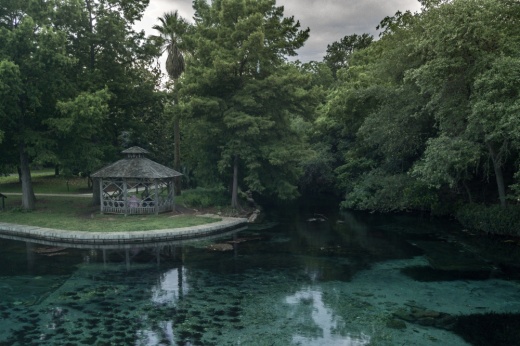Current situation
Ronald Ruiz, general manager of the EAA, said the shift occurred shortly after he began his tenure.
“I told our board that when it's all said and done, we're in the people business. Because everything we do in respect to managing this aquifer, carrying out our regulatory mandates, they all affect people in some form of fashion,” Ruiz said. “And that would be the focal point of my tenure as general manager: to reinvigorate our understanding of who we are.”
Using EAA’s core principles of manage, enhance and protect, Ruiz said the authority shifted their focus to create a more holistic approach, which included more education and community outreach. Ruiz said one crucial change was the creation of its education outreach center at Morgan’s Wonderland and the establishment of its field research park. At these locations, the EAA hosts a wide variety of age groups and uses an immersive experience to help educate people on how to better manage this precious resource.
Ruiz also noted that though the EAA has diversified their approach to education, it's always been a central part of the authority’s approach.
“We've always had an education program even predating the EAA back to our predecessor organization, the Edwards Underground Water District,” Ruiz said. “Education was always a critical part of what this agency did.”
Other outreach activities include:
- Traditional in-school curriculum presentations
- Weather station networks for public education
- Creating a rain gauge monitoring system that’s easily accessible
- Agricultural conservation grant programs
- Training for irrigation efficiency
- GIS mapping information sharing
- Creating protocols for protecting water resources during emergencies
- Hosting workshops on water-saving techniques

The approach
Ruiz said the three core principles guide the EAA’s comprehensive strategy for resource management.
In furtherance of its core principles, the EAA created a nonprofit organization in 2014-15, which has helped the EAA expand into a conservancy role.
The nonprofit allows the EAA to create new connections with the corporate sector and philanthropic entities as well as open new avenues for funding.
Additionally, for over 20 years, the nonprofit has assisted San Antonio with its Edwards Aquifer Protection Program by identifying land to purchase in the aquifer’s contributing, recharge and artesian zones.
The EAA also works to protect endangered species whose habitats are within the Comal and San Marcos springs. In 2013, the EAA implemented its Habitat Conservation Plan. The plan involves multiple partners, including the San Antonio Water System, San Antonio, New Braunfels and Texas State University.
This plan provides a framework to:
- Ensure the continuous spring flows for endangered species habitats in Comal and San Marcos springs
- Offers conservation measures to minimize any impact on these protected species
- Creates a legal framework for managing potential species interactions
Endangered species include:
- Fountain darter
- Comal Springs riffle beetle
- San Marcos gambusia
- Comal Springs dryopid beetle
- Peck’s cave amphipod
- Texas wild-rice
- Texas blind salamander
“We're exploring how we could potentially improve land management practices up in the watershed. There things that we can do to improve the soil profiles up on the Hill Country, such that we [may be able to] restore the land back to what it once was generations ago, such that we enable nature to better do its job of keeping water on the land longer and as it releases it, as it leaves that land, it leaves it in a cleaner state.” Ruiz said.





